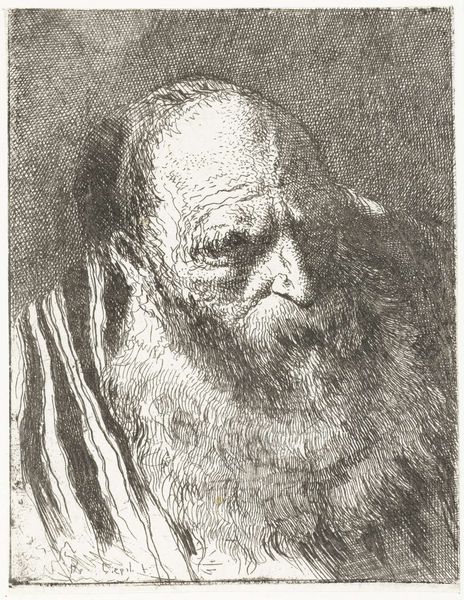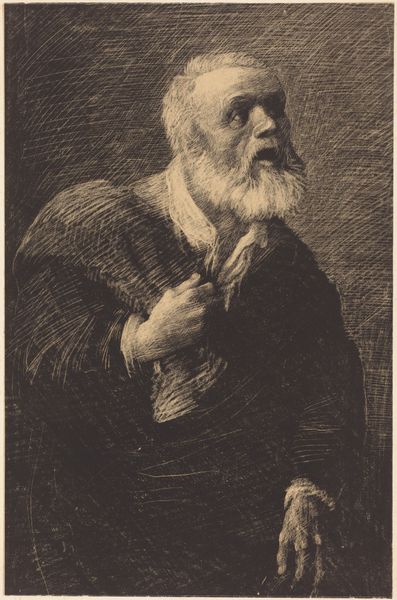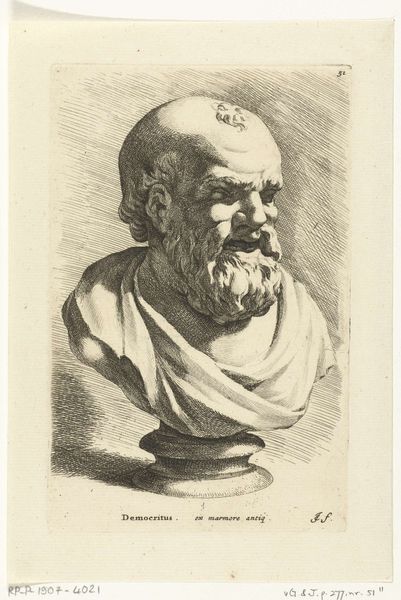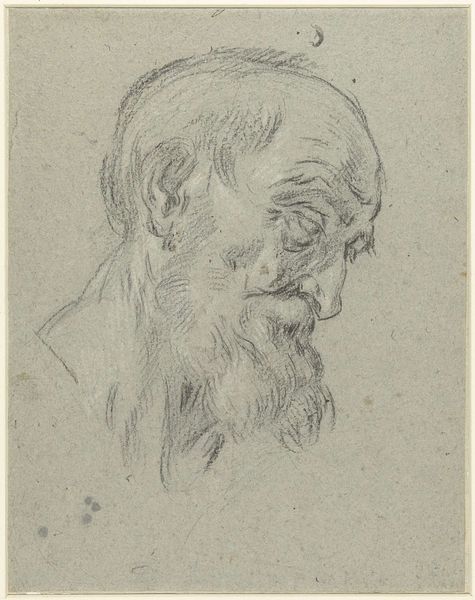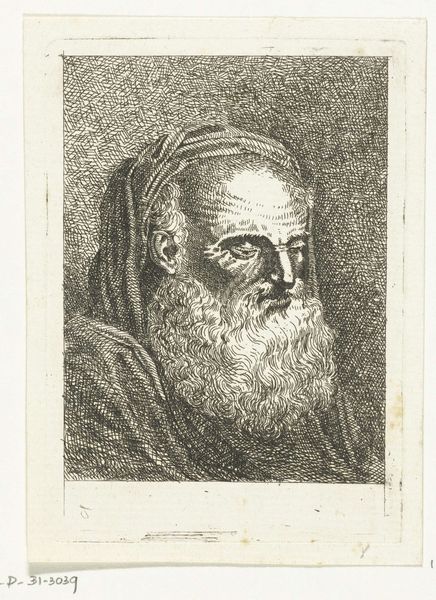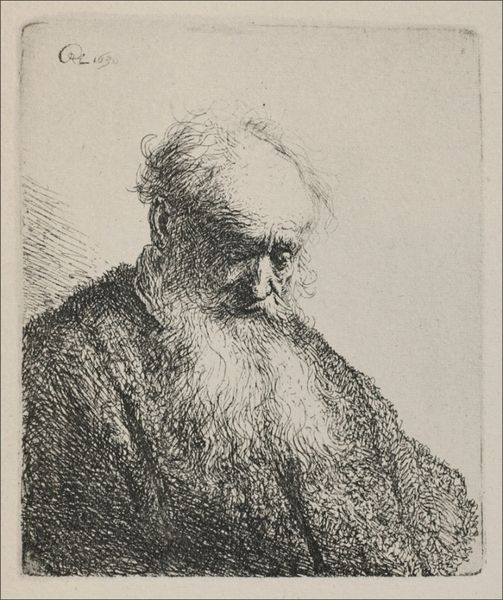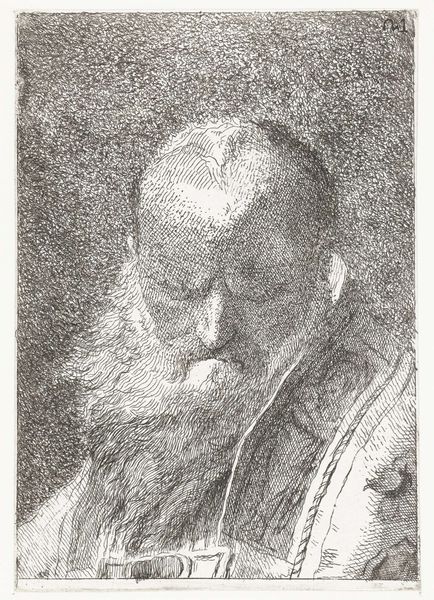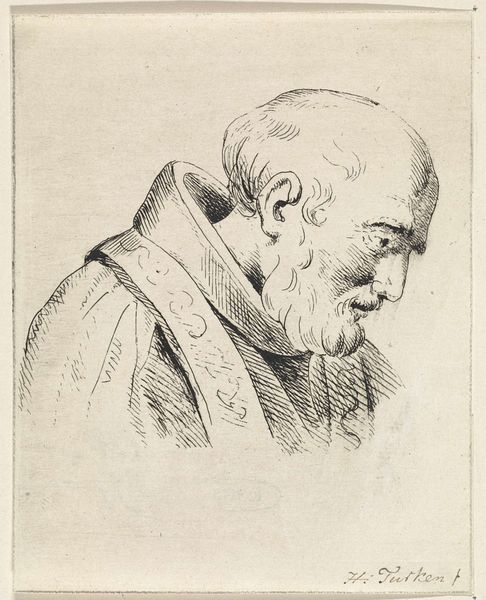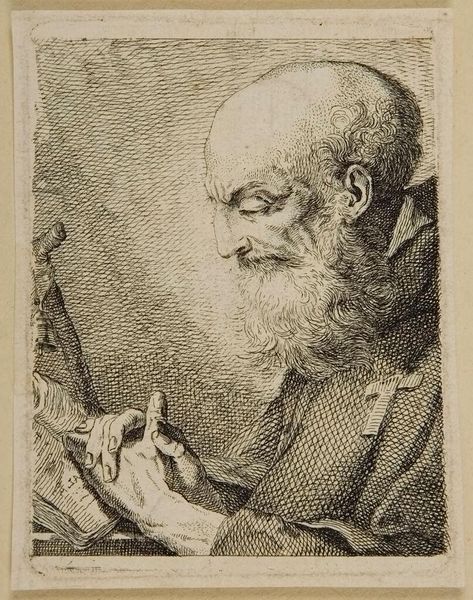
drawing, print, etching, paper
#
portrait
#
pencil drawn
#
drawing
# print
#
etching
#
pencil sketch
#
charcoal drawing
#
paper
#
pencil drawing
#
portrait drawing
Dimensions: height 110 mm, width 72 mm
Copyright: Rijks Museum: Open Domain
Curator: This etching by Jan Chalon, titled "Oude man," dates roughly from 1748 to 1795. It's printed on paper, offering a study in contrasts through its line work. Editor: A profound melancholy seems to emanate from this piece. The downcast gaze and the network of lines suggest a heavy burden. Curator: Observe how Chalon utilizes hatching and cross-hatching to construct volume and shadow. The density of line varies greatly, directing our gaze. Editor: The lines themselves tell a story beyond the literal depiction. They create a sense of texture, almost as if we could feel the weight of the man's beard. I wonder about the cultural implications of representing age and wisdom in this era, and how widely these images were circulated. Curator: Indeed, the portrait embodies a specific visual language. It suggests that the lines constitute more than just realistic representation. One might say that the structural organisation informs the subject's internal world, signifying melancholy via downward orientation of form. Editor: That's interesting! Thinking about his place and the audience for this print, I wonder if its display reinforced existing social hierarchies, or offered some more egalitarian view. Was it meant to elicit empathy, or reinforce difference? The work gives the viewer intimate access, which at this time, may only have been afforded by the advent of more widespread visual mediums. Curator: Well, these prints often circulated among connoisseurs and students for study. This would allow aspiring artists to study different etching techniques and understand the interplay of tone and texture achieved by such means. This circulation is a vital aspect in how knowledge was proliferated at the time. Editor: Looking at it now, I keep coming back to the raw simplicity of the line. I almost forget that the marks and the composition were the points you raised! It draws me into this quiet moment, inviting reflection. Curator: The starkness offers an austere experience of the gaze, nonetheless. I do agree that it has a stark immediacy, creating affect out of an economy of gesture. Editor: It certainly pushes beyond a straightforward likeness into a space that encourages wider social considerations of visual experience and its availability at this time.
Comments
No comments
Be the first to comment and join the conversation on the ultimate creative platform.


